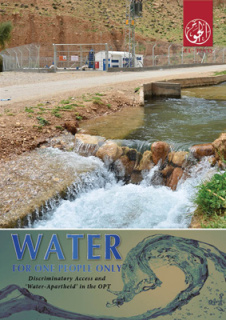
For many years, the Palestinian population of the West Bank, including East Jerusalem, and the Gaza Strip, has suffered from a shortage of clean, safe water. However, despite alarming predictions of insufficient drinking water supplies by 2040, based on the expected population growth in the Occupied Palestinian Territory (OPT), Jordan and Israel, water is not and has not been scarce in the region.
At present, the water sector in the OPT and Israel is characterised by highly asymmetrical overexploitation of damageable shared water resources, exhaustion of long-term storage, deterioration of water quality and increasing levels of demand driven by high population growth and accompanied by decreasing per capita supplies. However, the burden is disproportionately borne by the Palestinian population, who are impeded from exercising effective control over the development and management of the available water resources in the region.
Measures taken by the Israeli authorities, including the relentless expansion of settlements, continue to deprive Palestinians of vital water resources necessary for a dignified standard of living. Palestinian communities are left fragmented and confined to shrinking areas. These areas resemble a land-locked archipelago of territory in which essential human rights, and more specifically the right to water, are continuously denied.

